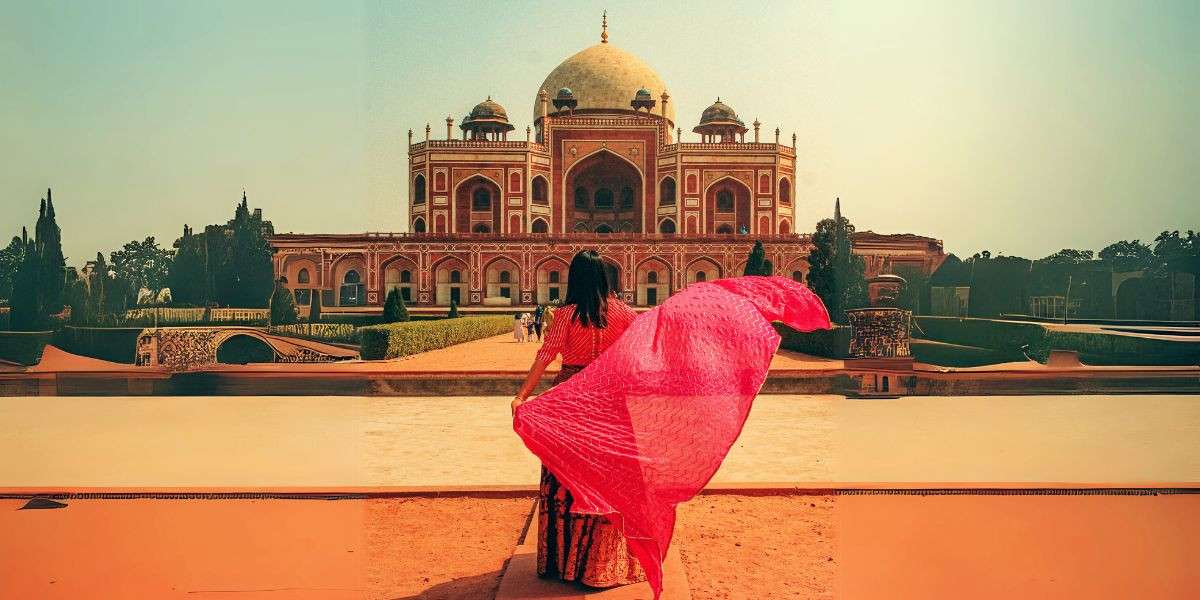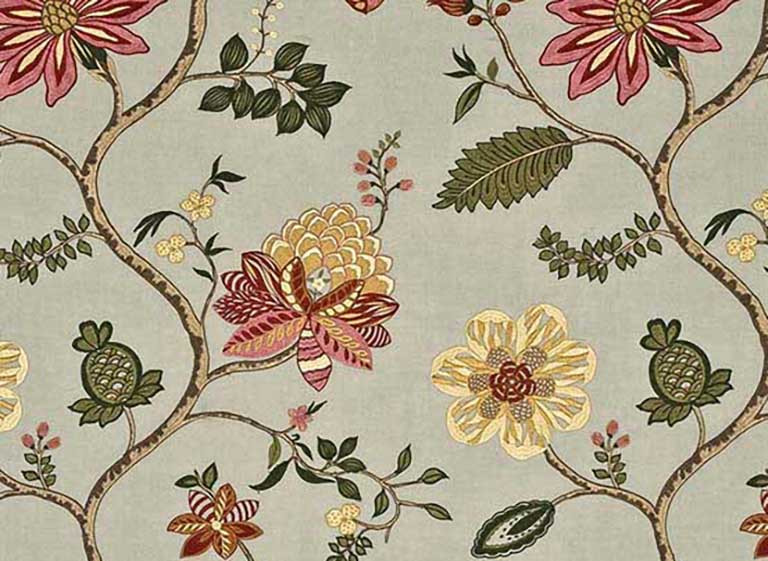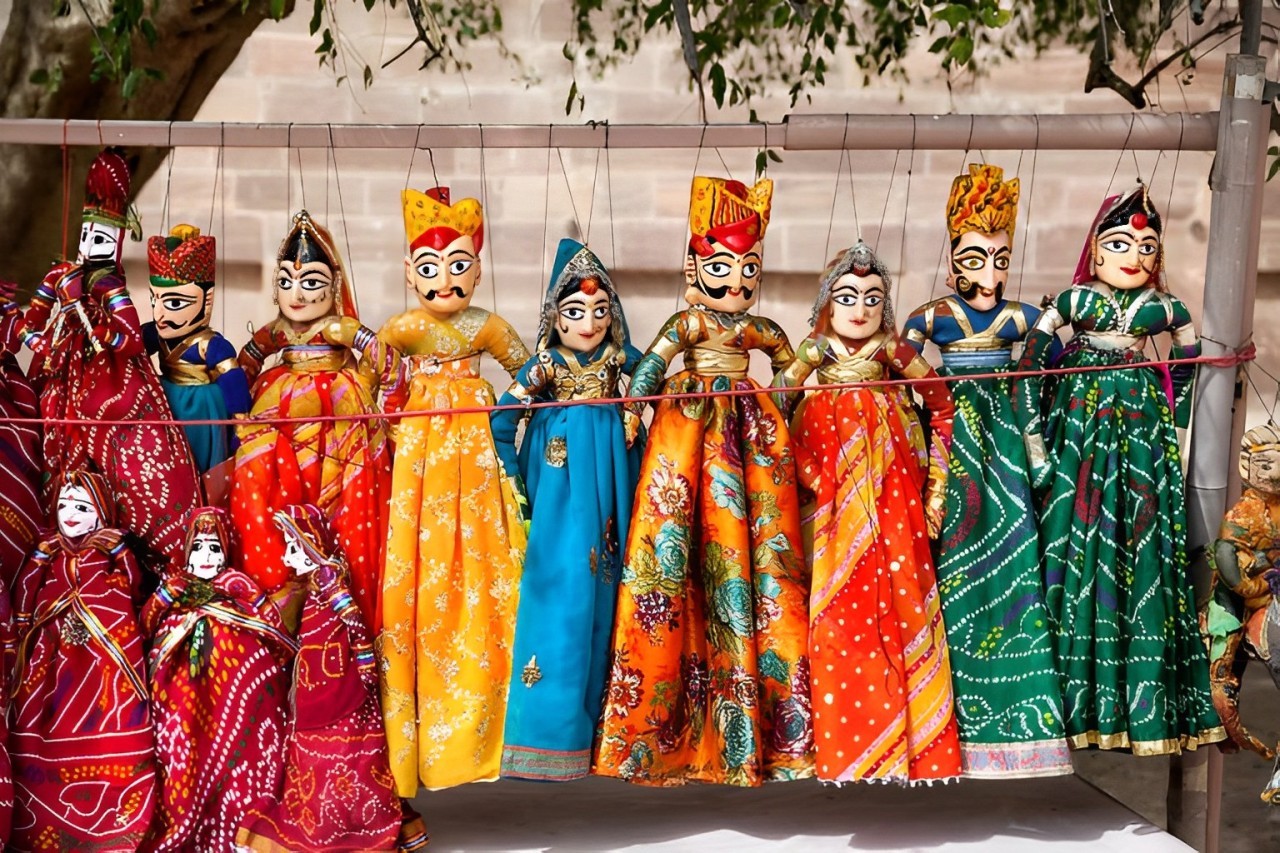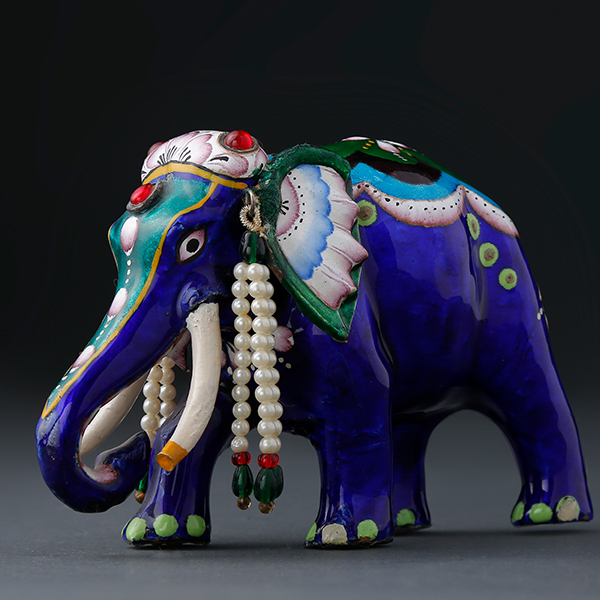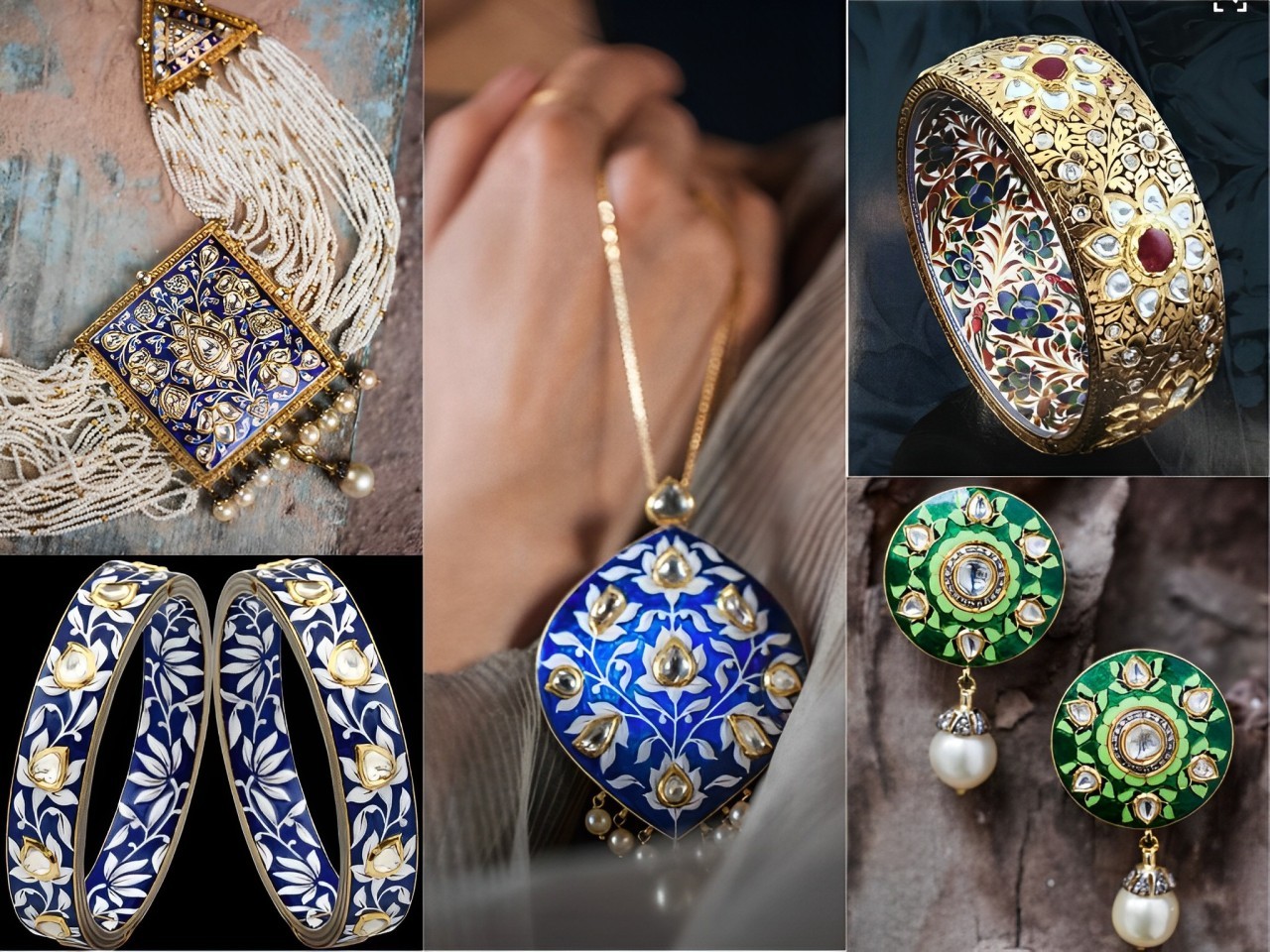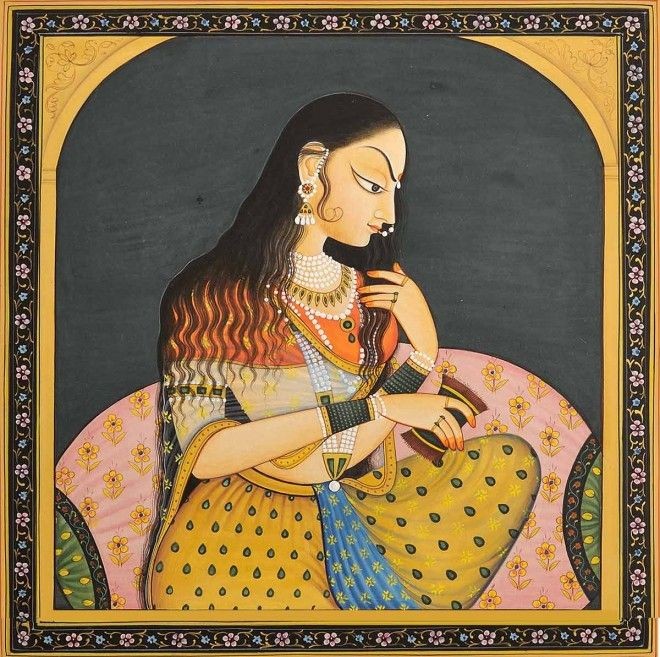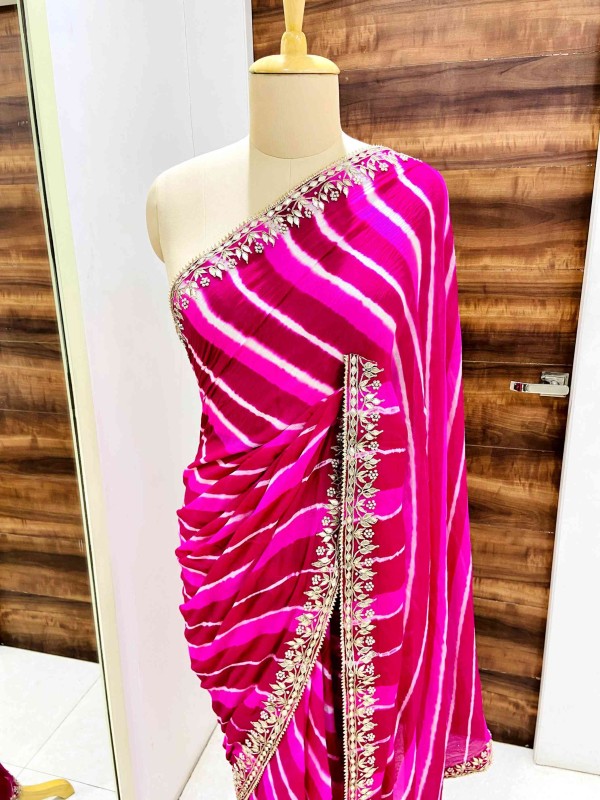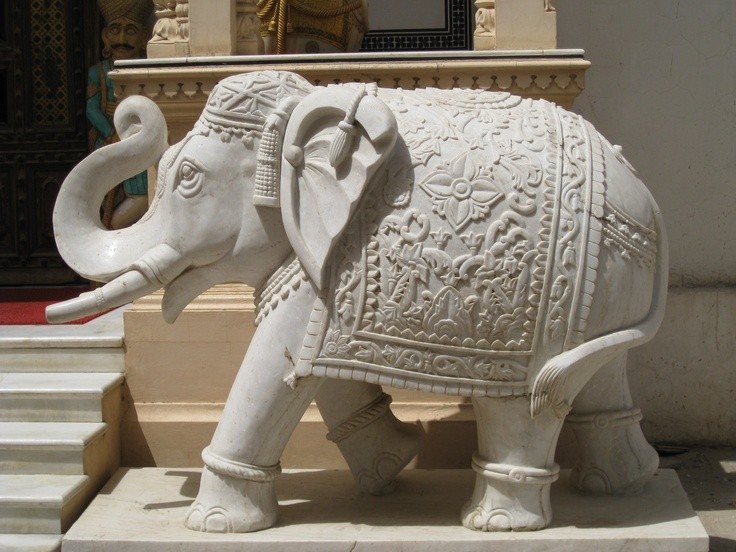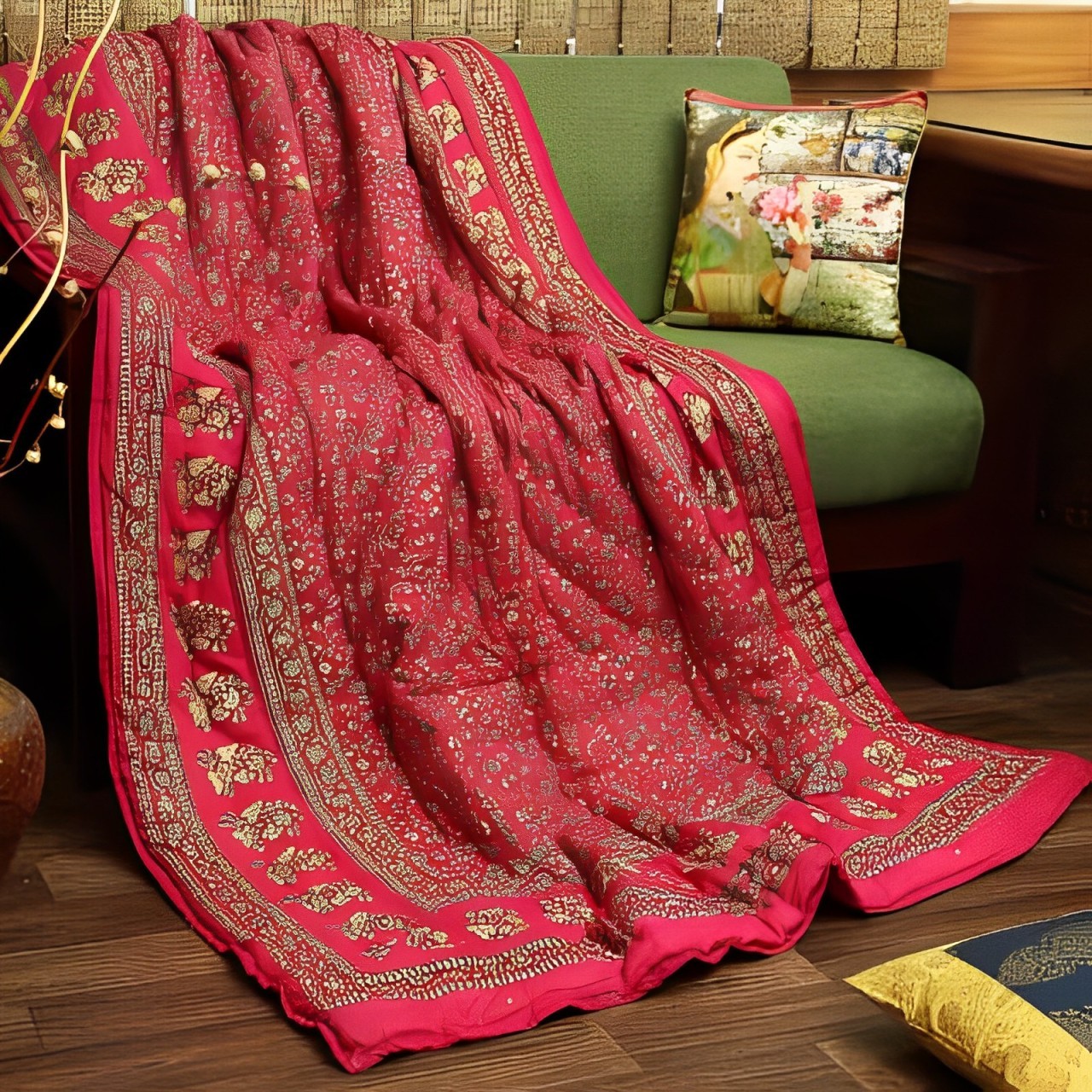Imitation Jewellery Jaipur

Imitation jewellery are accessories that are made using a variety of artificial materials. It is also called ‘Fashion jewellery’, perhaps because this is the jewellery type that allows people to experiment with different styles and trends in the most cost-effective way. It is also known as ‘Costume jewellery’ as it includes a range of articles to complement a particular fashionable outfit or garment as opposed to "real" (fine) jewellery, which is more costly and which may be regarded primarily as collectibles, keepsakes, or investments.
The expensive raw materials used to make ‘real’ jewellery raises the cost of the same and this means that such pieces cannot be purchased at the start of every new season without burning a hole in the pocket. With imitation jewellery, experimentation with a wide variety of designs and styles is possible. This is what makes it a desirable fashion item in any wardrobe.
A common misconception is that artificial jewellery is not as beautiful, classy or elegant as the ‘real’ version. In fact, with the emergence of new technologies, methods and techniques as well as high quality substitute materials, imitation jewellery is now at par with classic styles in terms of beauty and appeal.
Moreover, the same glamorous effect of precious metals and jewels like gold, diamonds, emeralds, pearls etc. can be achieved without a huge expenditure of money. These artificial pieces are designed to imitate expensive styles, with similarly elaborate designs and intricate settings. The tremendous varieties available means you can purchase the latest trends for the upcoming season without worrying about the cost.
Terminology:
It is also known as Artificial Jewellery, Imitation Jewellery, Costume Jewellery, Imitated Jewellery, Trinkets, Fashion Jewellery, Junk Jewellery, Fake Jewellery, or fallalery.
The term costume jewellery dates back to the early 20th century. It reflects the use of the word "costume" to refer to what is now called an "outfit".
How It's Components Changed Over Time
Originally, costume or fashion jewellery was made of inexpensive simulated gemstones, such as rhinestones or Lucite, set in pewter, silver, nickel, or brass. During the depression years, rhinestones were even down-graded by some manufacturers to meet the cost of production.
During the World War II era, sterling silver was often incorporated into costume jewellery designs primarily because:
The components used for base metal were needed for wartime production (i.e., military applications), and a ban was placed on their use in the private sector.
Base metal was originally popular because it could approximate platinum's colour, sterling silver fulfilled the same function.
This resulted in a number of years during which sterling silver costume jewellery was produced and some can still be found in today's vintage jewellery marketplace.
Modern costume jewellery incorporates a wide range of materials. High-end crystals, cubic zirconia simulated diamonds, and some semi-precious stones are used in place of precious stones. Metals include gold- or silver-plated brass, and sometimes vermeil or sterling silver. Lower-priced jewellery may still use gold plating over pewter, nickel, or other metals; items made in countries outside the United States may contain lead. Some pieces incorporate plastic, acrylic, leather, or wood.
Imitation Jewellery through the Ages:
Costume jewellery can be characterized by the period in history in which it was made.
Art Deco period (1920–1930s)
The Art Deco movement was an attempt to combine the harshness of mass production with the sensitivity of art and design. It was during this period that Coco Chanel introduced costume jewellery to complete the costume. The Art Deco movement died with the onset of the Great Depression and the outbreak of World War II.
Some of the characteristics of the costume jewellery in the Art Deco period were:
- Free-flowing curves were replaced with a harshly geometric and symmetrical theme
- Long pendants, bangle bracelets, cocktail rings, and elaborate accessory items such as cigarette cases and holders
Retro period (1935 to 1950)
In the Retro period, designers struggled with the art versus mass production dilemma. Natural materials merged with plastics. The retro period primarily included American-made jewellery, which had a distinctly American look. With the war in Europe, many European jewellery firms were forced to shut down. Many European designers emigrated to the U.S. since the economy was recovering.
Some of the characteristics of costume jewellery in the Retro period were:
- Glamour, elegance, and sophistication
- Flowers, bows, and sunburst designs with a Hollywood flair
- Moonstones, horse motifs, military influence, and ballerinas
- Bakelite and other plastic jewellery
Art Modern period (1945 to 1960)
In the Art Modern period following World War II, jewellery designs became more traditional and understated. The big, bold styles of the Retro period went out of style and were replaced by the more tailored styles of the 1950s and 1960s.
Some of the characteristics of costume jewellery in the Art Modern period were:
- Bold, lavish jewellery
- Large, chunky bracelets, charm bracelets, Jade/opal, Citrine and topaz
- Poodle pins, Christmas tree pins, and other Christmas jewellery
- Rhinestones
With the advent of the Modern period came "Body Jewellery". Carl Schimel of Kim Craftsmen Jewellery was at the forefront of this style. While Kim Craftsmen closed in the early 1990s, many collectors still forage for their items at antique shows and flea markets.
General history of Imitation Jewellery:
Costume jewellery has been part of the culture for almost 300 years. During the 18th century, jewellers began making pieces with inexpensive glass. In the 19th century, costume jewellery made of semi-precious material came into the market. Jewels made of semi-precious material were more affordable, and this affordability gave common people the chance to own costume jewellery.
But the real golden era for costume jewellery began in the middle of the 20th century. The new middle class wanted beautiful, but affordable jewellery. The demand for jewellery of this type coincided with the machine age and the industrial revolution. The revolution made the production of carefully executed replicas of admired heirloom pieces possible.
As the class structure in America changed, so did measures of real wealth. Women in all social stations, even the working-class woman, could own a small piece of costume jewellery. The average town and countrywoman could acquire and wear a considerable amount of this mass-produced jewellery that was both affordable and stylish.
Costume jewellery was also made popular by various designers in the mid-20th century. Some of the most remembered names in costume jewellery include both the high and low priced brands such as Crown Trifari, Dior, Chanel, Miriam Haskell, Monet, Napier, Corocraft, Coventry, and Kim Craftsmen.
A significant factor in the popularization of costume jewellery was Hollywood movies. The leading female stars of the 1940s and 1950s often wore and then endorsed the pieces produced by a range of designers. If you admired a necklace worn by Bette Davis in The Private Lives of Elizabeth and Essex, you could buy a copy from Joseff of Hollywood, who made the original. Stars such as Vivien Leigh, Elizabeth Taylor, and Jane Russell appeared in adverts for the pieces and the availability of the collections in shops such as Woolworth made it possible for ordinary women to own and wear such jewellery.
Coco Chanel greatly popularized the use of faux jewellery in her years as a fashion designer, bringing costume jewellery to life with gold and faux pearls. Kenneth Jay Lane has since the 1960s been known for creating unique pieces for Jackie Onassis, Elizabeth Taylor, Diana Vreeland, and Audrey Hepburn. He is probably best known for his three-strand faux pearl necklace worn by Barbara Bush to her husband's inaugural ball.
In many instances, high-end fashion jewellery has achieved a "collectible" status and increased value over time. Today, there is a substantial secondary market for vintage fashion jewellery. The main collecting market is for 'signed pieces', that is pieces that have the maker's mark, usually stamped on the reverse. Amongst the most sought after are Miriam Haskell, Coro, Butler and Wilson, Crown Trifari, and Sphinx. However, there is also demand for good quality 'unsigned' pieces, especially if they are of an unusual design.
Imitation Jewellery for Special Occasions:
Imitation Jewellery from India is one of the most popular accessories around the world today for a reason. Indian culture celebrates colour, life and extravagance and as such the jewellery worn, especially for special occasions, is supposed to be quite heavy and gorgeous. The ornate factor is what makes it so attractive and it is also what can make or break an outfit and this is where artificial jewellery comes in handy.
During wedding season, a lot of different accessories are required and they all have to be in the Indian style. Moreover, the same pieces cannot be repeated as this can be considered a serious fashion faux pas. This is why there are many wonderful options in wedding imitation jewellery, for brides and guests.
Fashion Jewellery for Casual Days:
Dangling earrings with twinkling stone studded designs are a great way to dress up both Indian and western outfits. They look great with Indo Western items like tunics and tops. The most popular use for imitation jewellery is in the casual wear wardrobe. With the addition of a small, trendy accessory item the whole look can be elevated into something special.
Tunics too should be worn with fashion jewellery like long gold-plated necklaces, Victorian necklaces and stone studded earrings. Pair up trendy artificial jewellery with Indo Western dresses and tunics for an unforgettable party look. Elaborate Indian imitation jewellery is the perfect centrepiece for a glamorous ethnic look, whether it is a saree, lehenga choli or salwar kameez.
Reasons Why Artificial Jewellery is Superior to Real Jewellery:
Jewellery has been an integral part of Indian culture since time immemorial. Aside from the aesthetic appeal, jewellery is also assigned spiritual and cultural utility in various countries.
However; as exciting and exalting gold, diamond, or platinum jewellery might be, it is being overshadowed by artificial jewellery for a number of reasons. Where we once praised the craftsmanship and nobility of real jewellery, we now find ourselves enthralled by the convenience and thriftiness of artificial or imitation jewellery. Ever-changing trends pose yet another challenge for real jewellery to keep up with its competitors. This beckons the question “what makes artificial jewellery so desirable?”
Economical Prices and Easily Replaced:
It is no secret that real jewellery is unaffordable by the majority of the population. Artificial jewellery trumps real jewellery in this regard since it is equally as alluring, and can be purchased at a fraction of the price. Artificial jewellery is the go-to option for women who enjoy continually experimenting with different accessories, be it rings, necklaces, anklets, bracelets, or bangles. Being inexpensive, artificial or imitation jewellery doesn’t come with the extra headache of determining its quality or authenticity. Moreover, losing or misplacing artificial jewellery doesn’t sting as much as losing pricey real jewellery.
Travel and Storage-Friendly:
Women across the globe have experienced the trouble, anxiety, and sheer horror of traveling with an expensive set or article of real jewellery. The moment your jewellery leaves the house, you’re plagued with thoughts ranging from having your precious jewellery stolen to accidently losing it along the way. Artificial and imitation jewellery have all the charm, yet none of the hassle that comes with real jewellery.
Tough and Durable:
Due to the nature and solid components that make up artificial jewellery, it is tough and durable as opposed to the delicate nature and craftsmanship of real jewellery. They both are available in trendy and intricate designs, however; most artificial jewellery is made up of copper or brass, these metals tend to be more resilient to wear and tear, conclusively deeming it a better long-term solution.
Minimal Maintenance:
Artificial jewellery requires almost no maintenance. Its components are sturdy, and self-preserving. Whereas real jewellery demands polishing, cleaning, and extra attention with regards to its storage. If stored inadequately, diamonds tend to become yellow over time, and gold ornaments gradually tarnish. It is no wonder that artificial jewellery has surpassed the popularity that once belonged to real jewellery.
Diverse and Versatile:
Artificial jewellery is available in a diverse range of patterns, styles, and inexpensive metals that are equally as exquisite as real gold or diamond alternatives. Additionally, artificial jewellery is extremely versatile, and can be paired beautifully with nearly any outfit, or worn at any event. This ensures your outfits keep up with latest trends, and leave you looking fashionable without costing an arm or a leg.
Global Market of Artificial Jewellery:
The costume market of jewellery was valued approximate at $32.9 billion in year of 2019, and is expected to reach around $ 59.7 billion till 2027. Expecting a growth of 7.80% from 2020 to 2027 in the jewellery market. In 2019, the female gender section accounted for more than half of the share in the total costume jewellery market, and is expected to grow at a CAGR of 7.60% throughout the forecast period.

